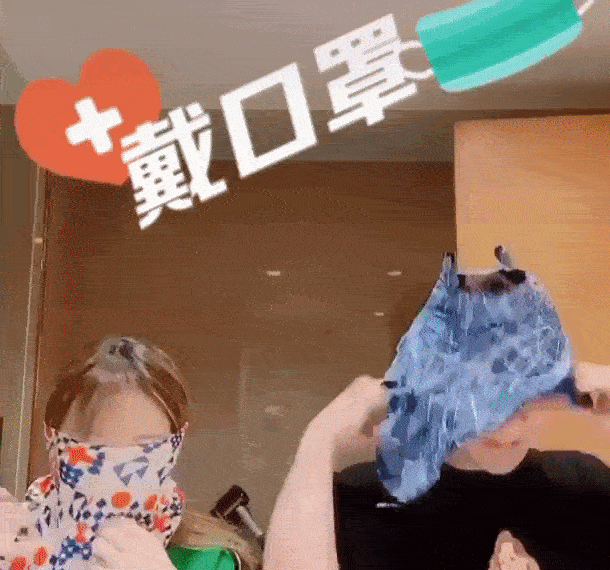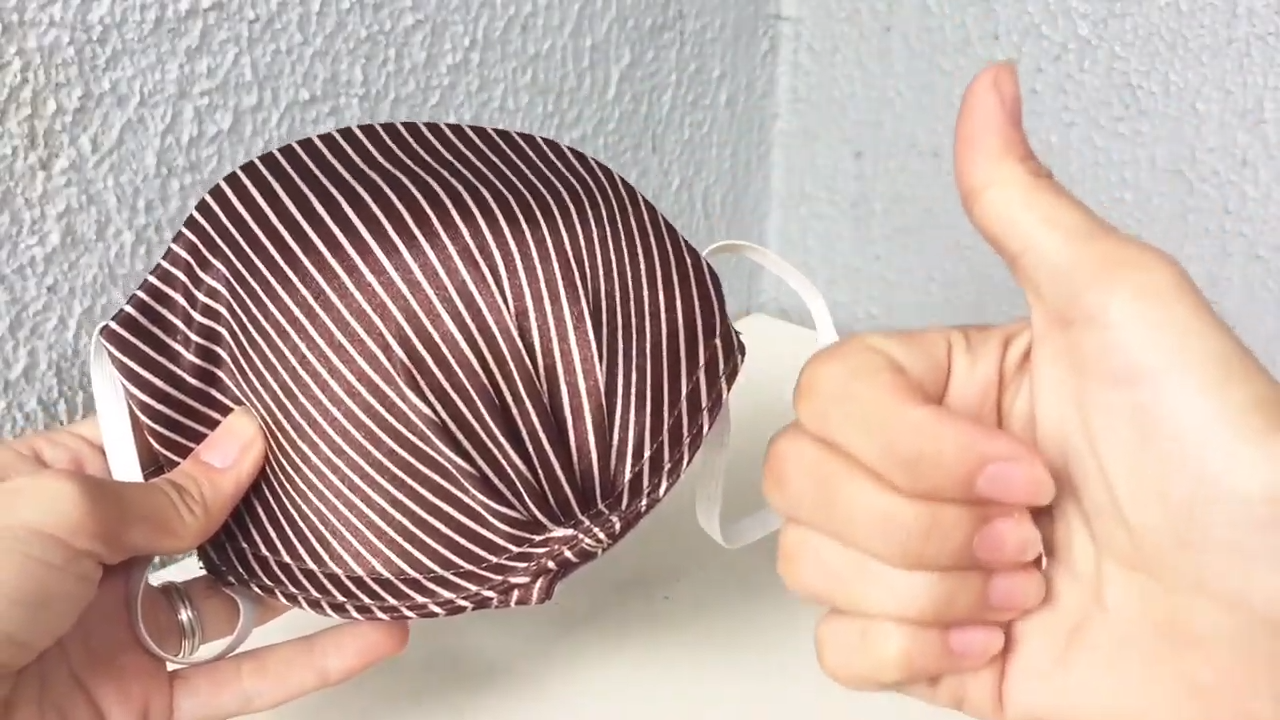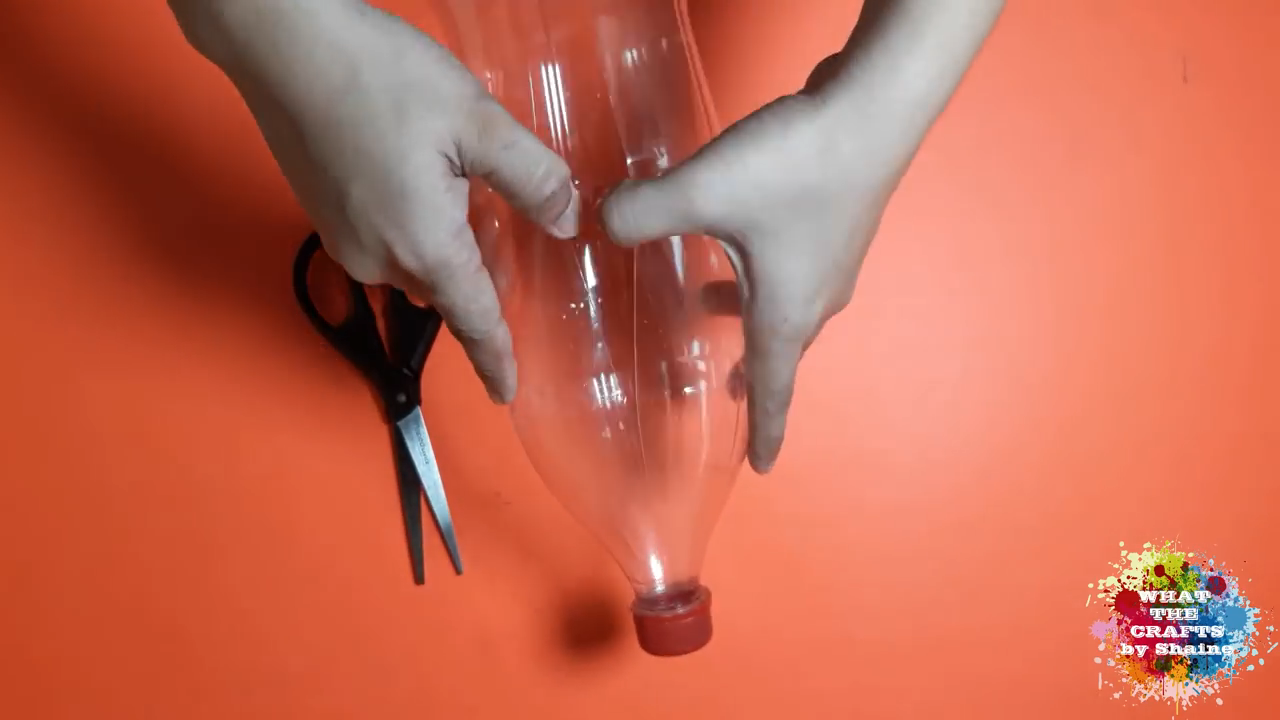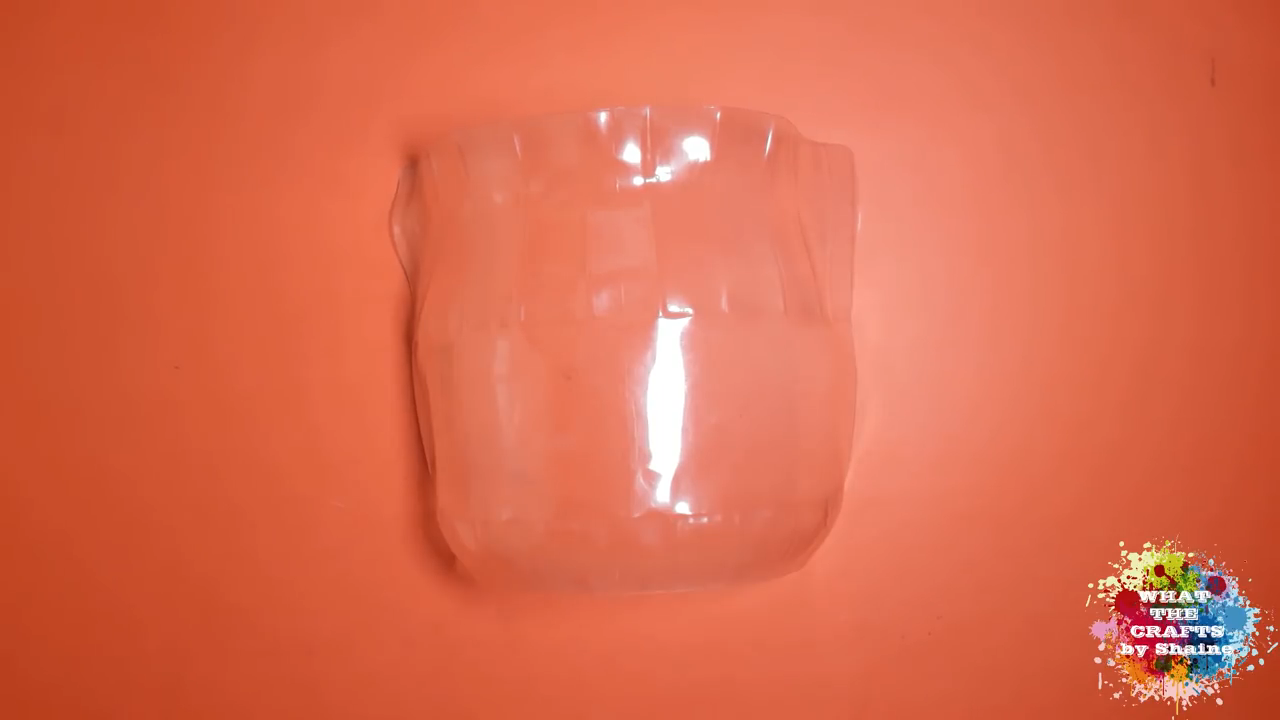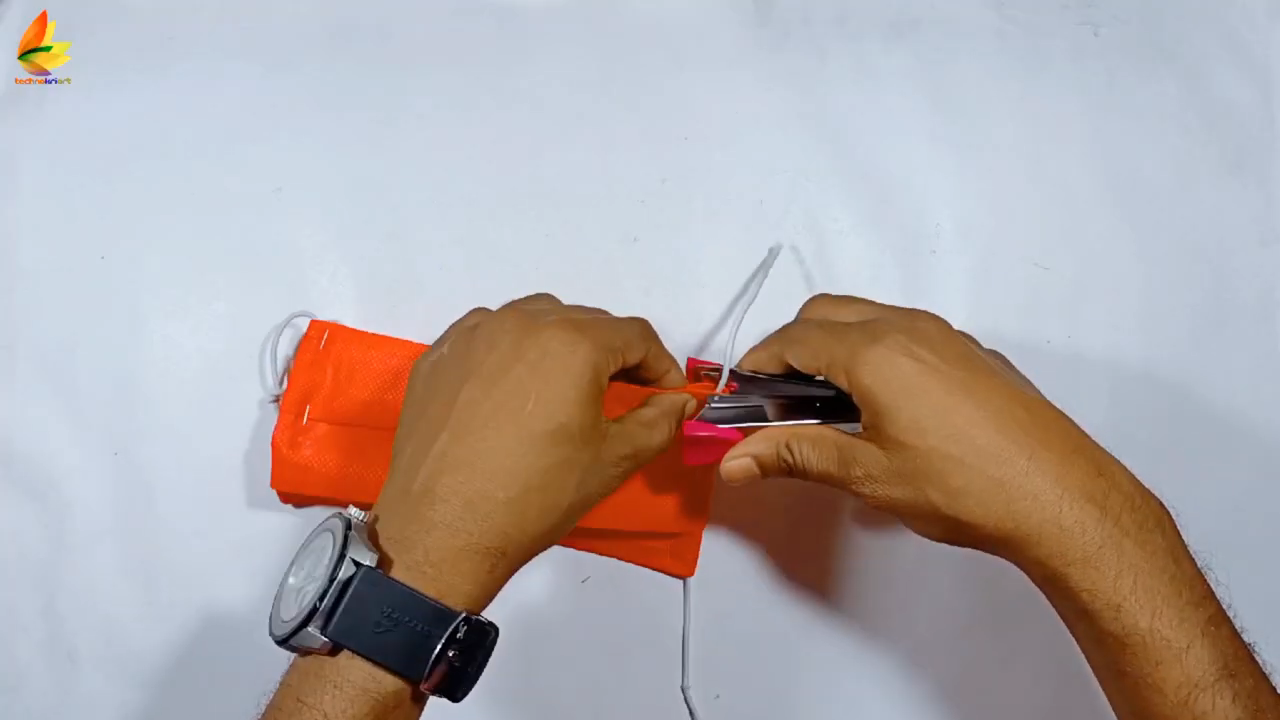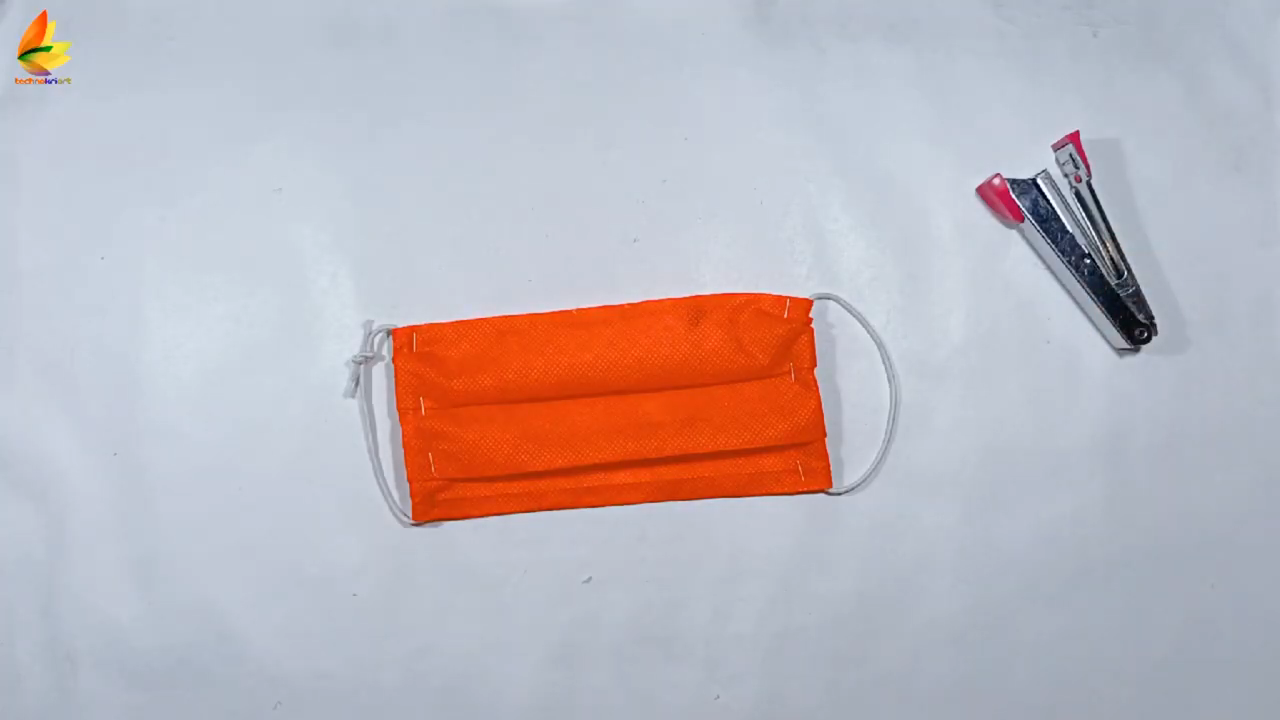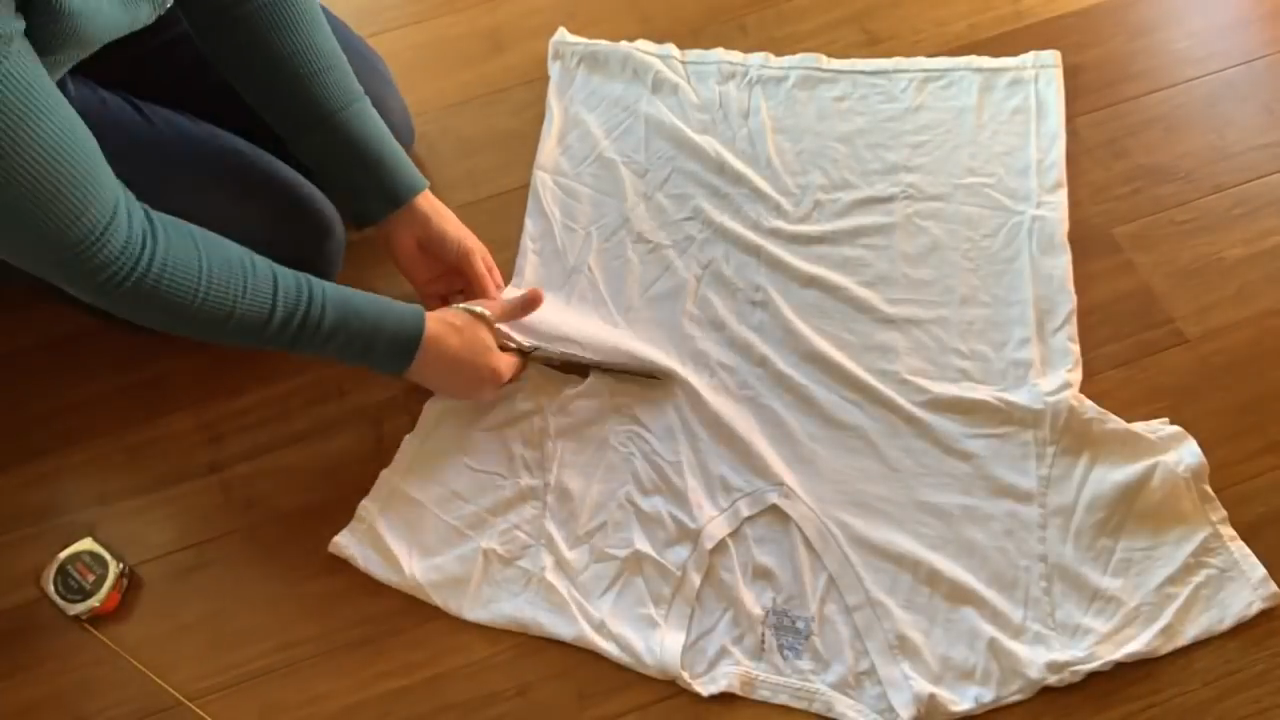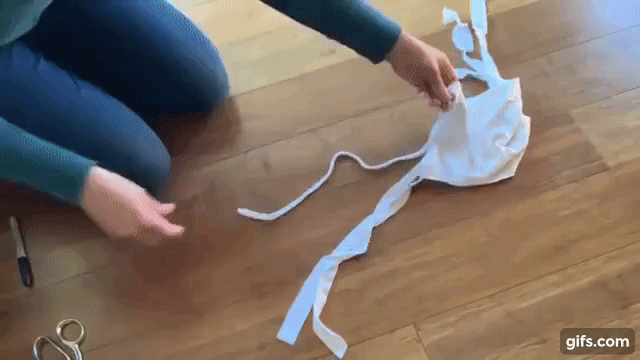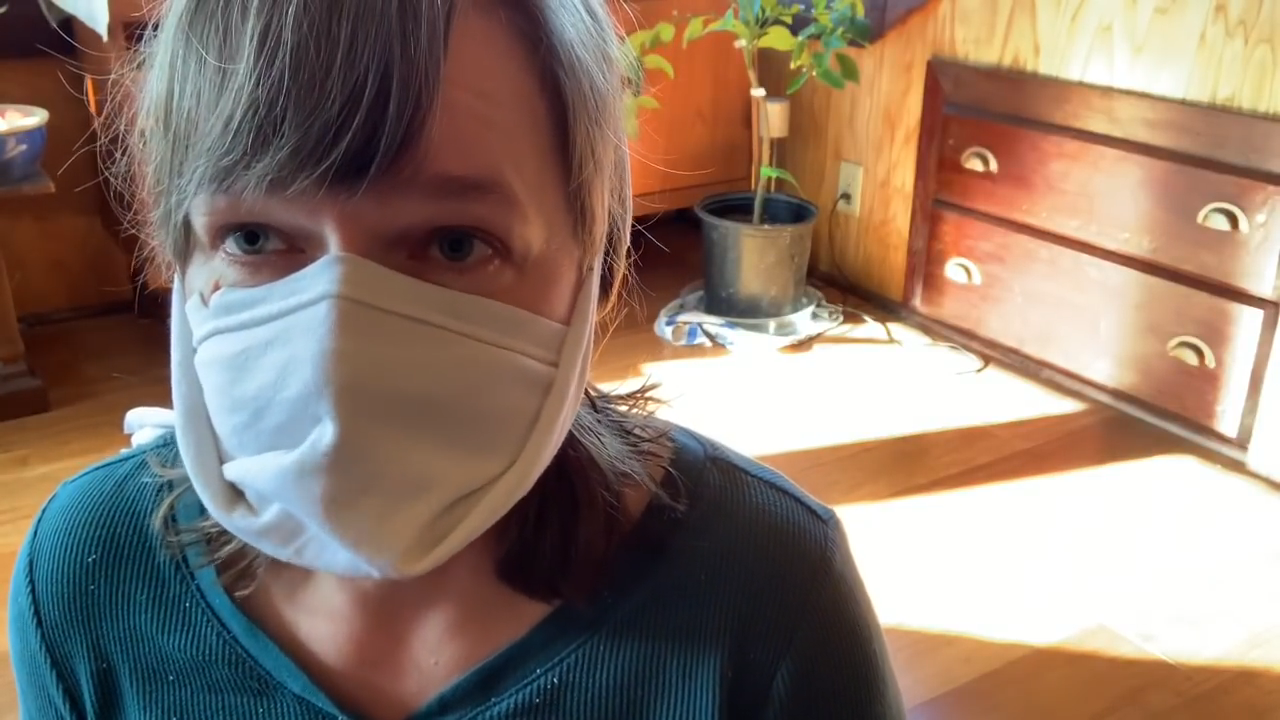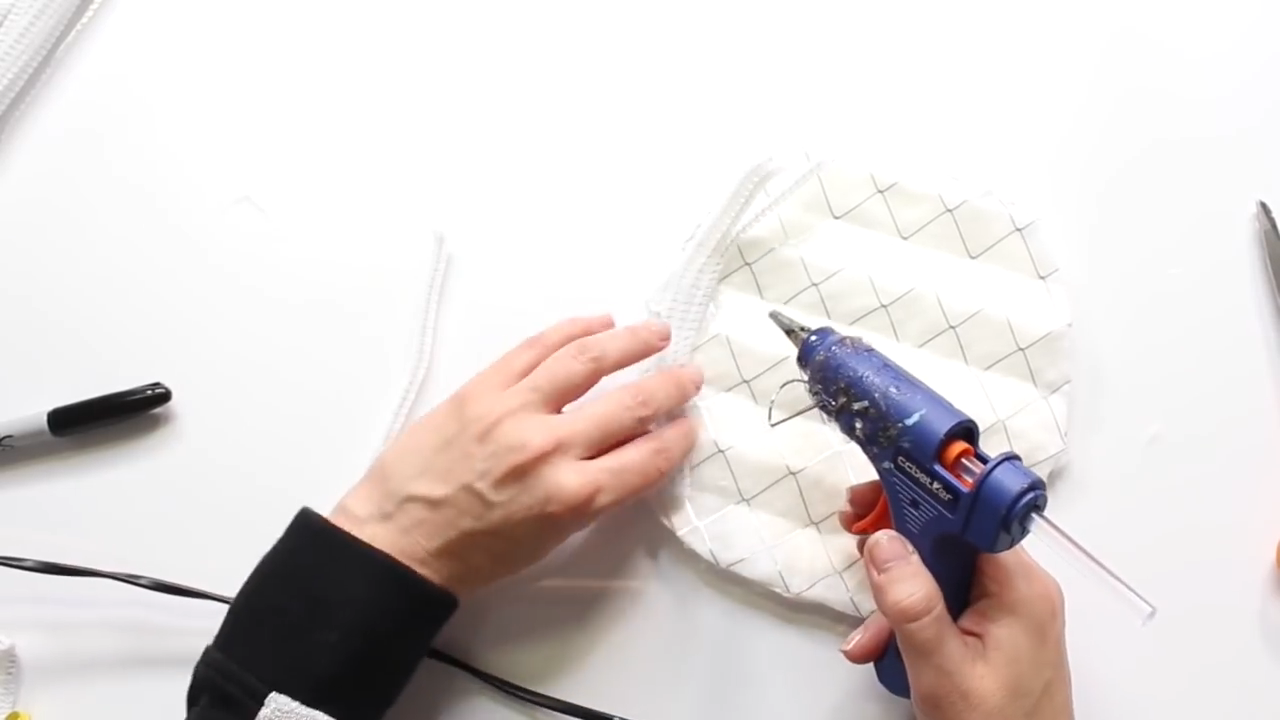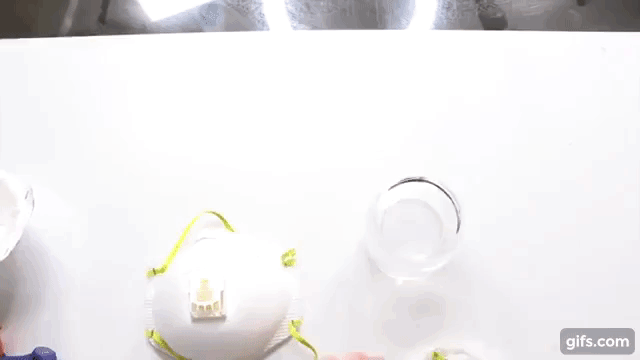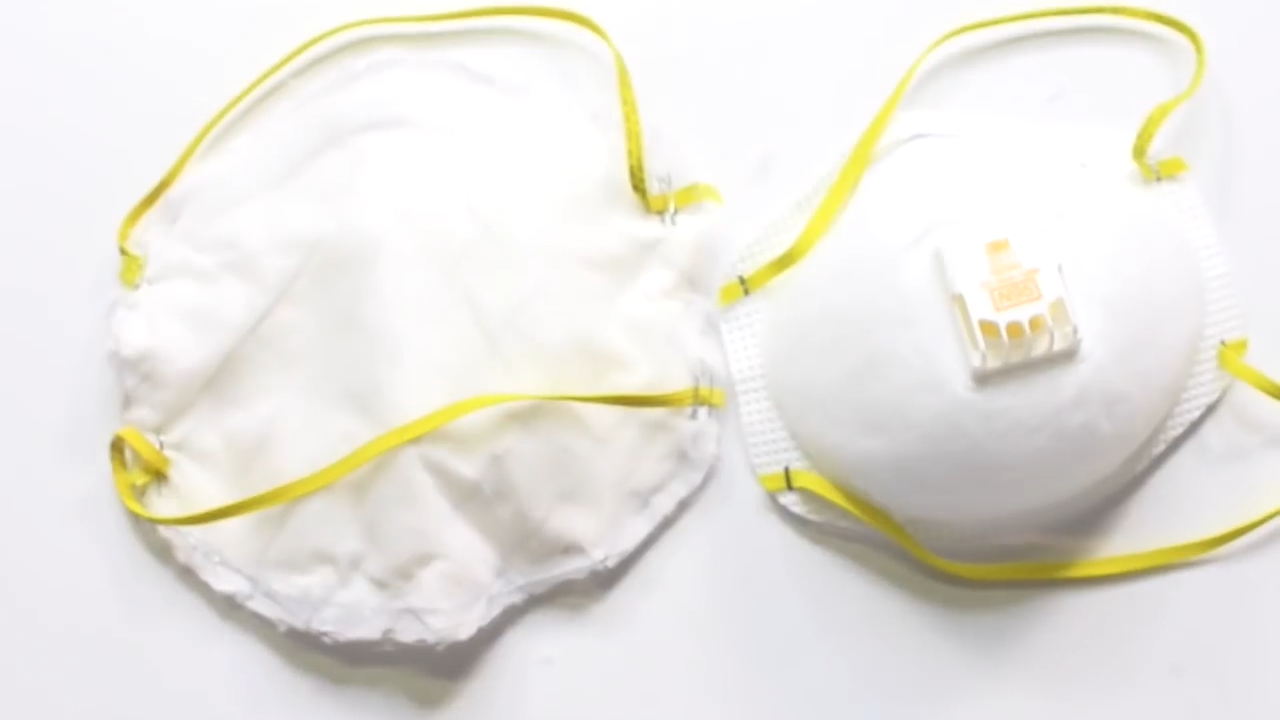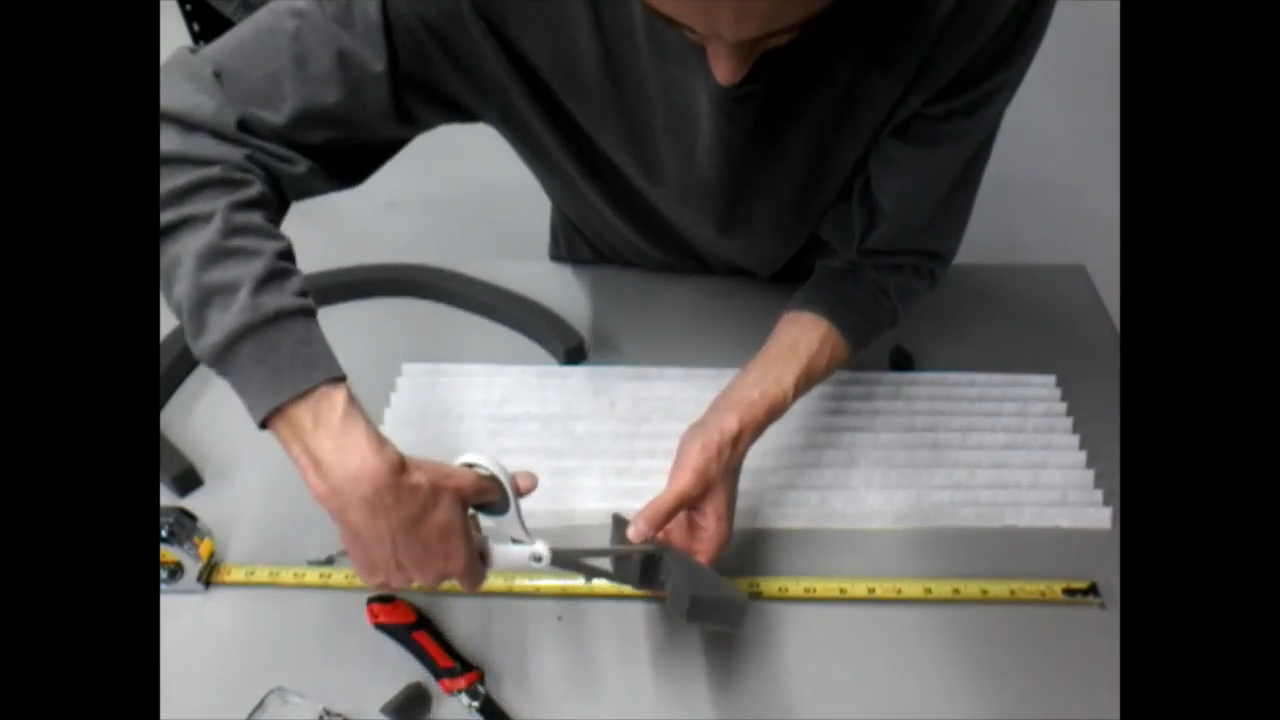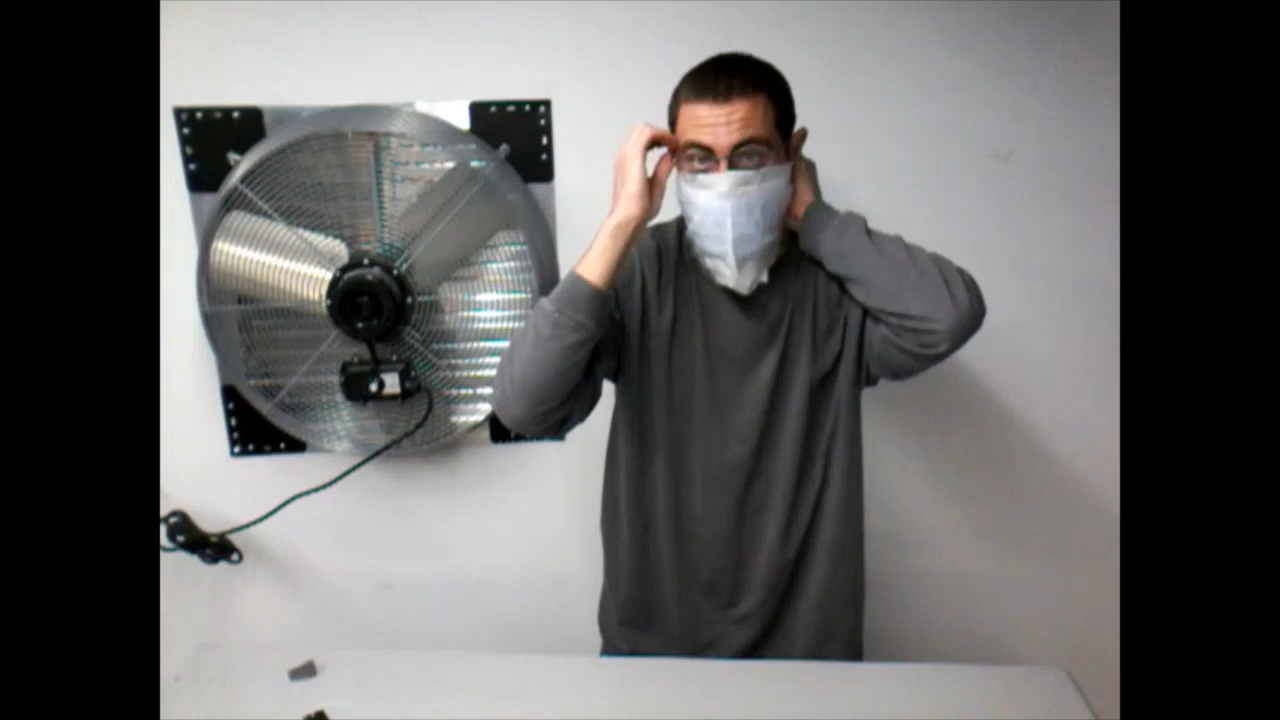How to make your own face mask
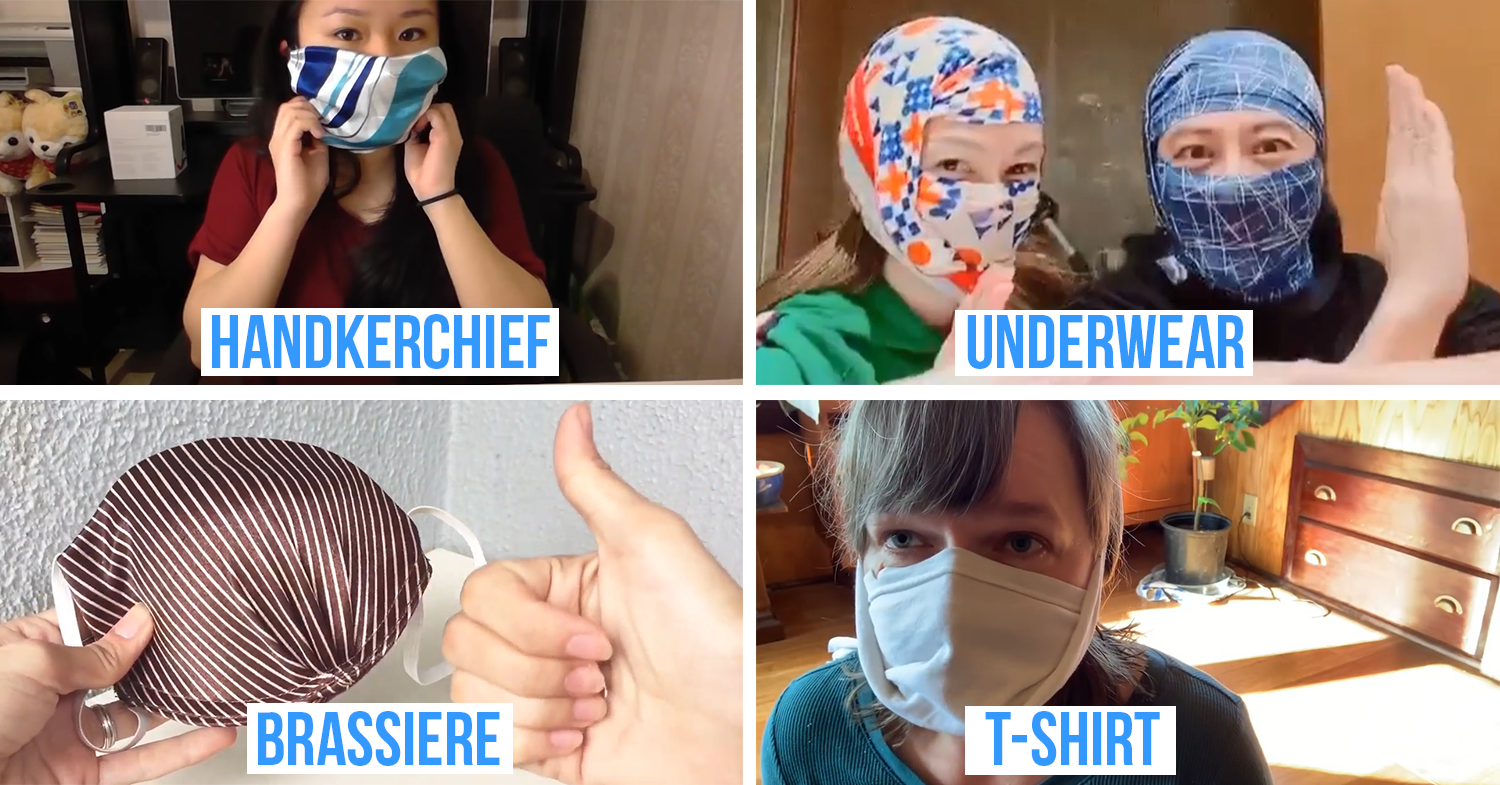
Images adapted from: Xin Says, @ericsuen, BRILLIANT CRAFT IDEAS, Jane C
Due to a shortage of surgical and N95 face masks, some have started using anything from fruit peels and sanitary pads out of desperation. Others took to the internet to post their own DIY video guides on making a face mask, but not everyone knows how to sew.
If you don’t have a sewing machine or needle and thread, fear not! Here are several ideas to unthread until you can get your hands on some real masks.
Note: Use caution when handling sharp tools and glue guns!
– EASY –
1. Handkerchief
If you need to make a mask right now, just reach into your pockets. This makeshift mask should do the trick until you get home.
What you will need:
- Handkerchief
- Two hair ties or elastic bands
Instructions:
1) Fold your handkerchief to make a rectangle, making it big enough for your face.
2) The hair ties go on the ends of the folded handkerchief to make mask straps.
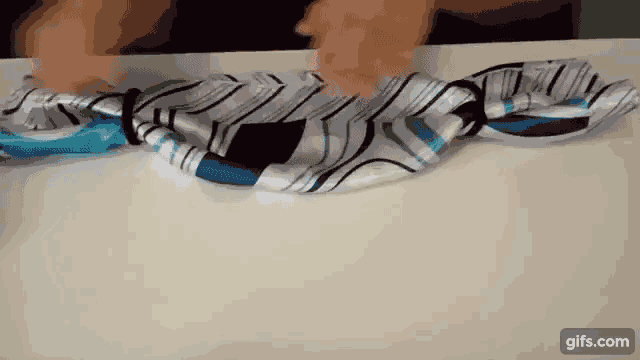
Your handkerchief will look like a candy wrapper
Source
3) Once done, fold the flaps in, and your mask is ready. To make it tighter, move the straps closer to the middle during folding. Optionally, you can use safety pins to hold it together.
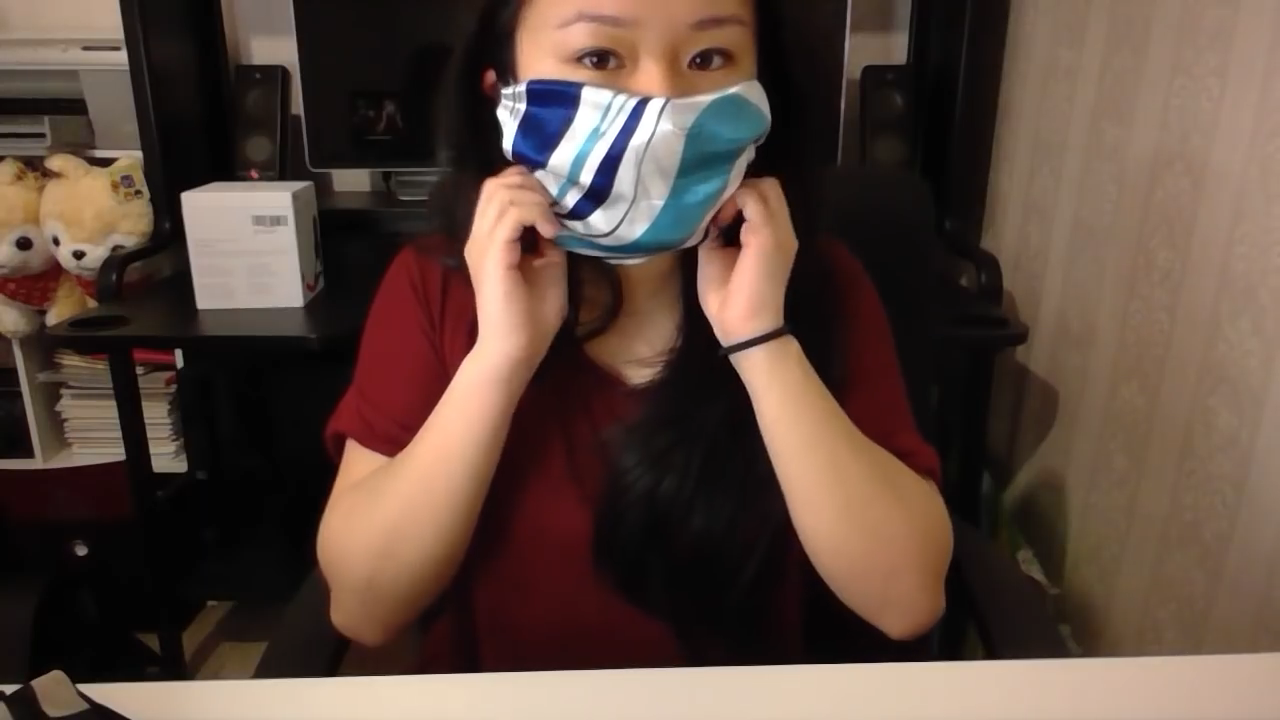
The mask easily comes apart for washing or replacement.
Source
It’s only a small step from holding it with your hand, but it is better than nothing.
2. Boxers
This requires nothing but a pair of Calvin Kleins (or your brand of choice) and a bit of simple creativity from boredom. The final result resembles a ski mask or a ninja hood.
Don’t use tighty-whities unless you want to be a last-minute cosplay of Bane. Always make sure they are clean before using them, otherwise, everyone will care who you are when you put on your mask.
What you will need:
- A pair of unused boxers
Instructions:
1) Put your head through the waist of the boxers; your head should pop out of one leg.
2) Now wrap the other over your head as you would a swimming cap.
3) Twist the back of the underwear if the mask is too loose, and you’re all set!
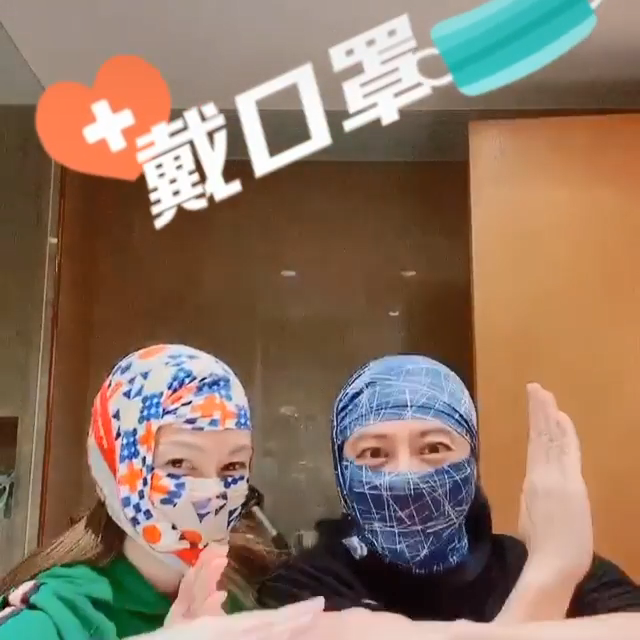
’90s Hong Kong actor-singer Eric Suen and his wife, actress Macy Chan take on part-time jobs as ninjas.
Source
You can watch the full Instagram video here.
3. Brassiere
On closer look, the shape of a bra cup resembles the shape of an N95 mask, which inspired some to make them in pairs. You may need bigger or smaller sizes if the bra is not a one size fits all.
What you will need:
- Brassiere that’s big enough for half your face
- Scissors
- Hot glue and a glue gun
Instructions:
1) Cut the bra in half and leave only one cup.
2) Remove the strap and its buckles from the cup(s).
3) Then, fold where the straps used to be and hot-glue it to make a loop. Do the same for the other side where the cups used to connect.
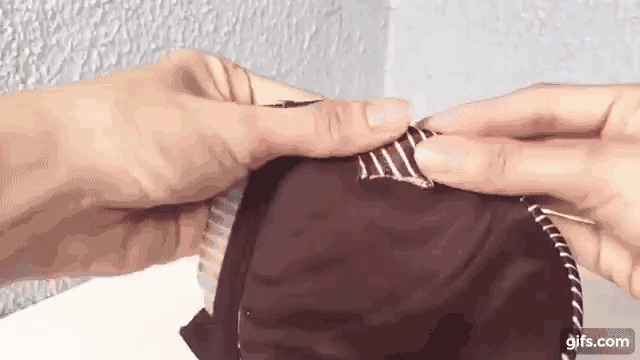
4) Take the bra straps from earlier and half them to make two straps. Now, thread them through both loops for the ears.
5) Finally, hot-glue the straps’ loose ends together to make new ones for the mask.
It’s not the breast protection for your face, but it works! Using frilly bras makes you stand out in the crowd. 😅
4. Plastic bottles
These are easy to find if you are an avid soda drinker or stockpiled on bottled waters. Use a 10-liter water bottle if you want a helmet to cover every angle. This only guards your face from sneezing or coughing at others but not keep the bad air out, so use this with a homemade mask that covers your face.
What you will need:
- Plastic bottle
- Scissors
- Foam Strip (2-3cm wide)
- Garter
- Cutter
- Double-sided tapes
- Hole puncher
Instructions:
1) Carefully remove the neck and base of the bottle with scissors.
2) Cut from the bottom of the tube to the top.
3) After, flatten the barrel so that it’s wide enough to cover your face.
4) Punch holes on the end of the broader side of the tube; this is where the straps go later.
5) Using the double-sided tape, stick the foam strip in the area between the two holes where the forehead is.
6) Thread the garter band through the holes and tie them up. Your face shield is ready!
5. Grocery Tote Bags
Waste not, want not – all that grocery shopping finally paid off! Go greener and reuse grocery bags to make face masks. The fabric is thinner and rougher than a surgical mask, so you will probably want to fold it once more.
What you will need:
- Two different-colored fabric grocery bags (made from polypropylene)
- Ruler
- Scissors
- Staplers
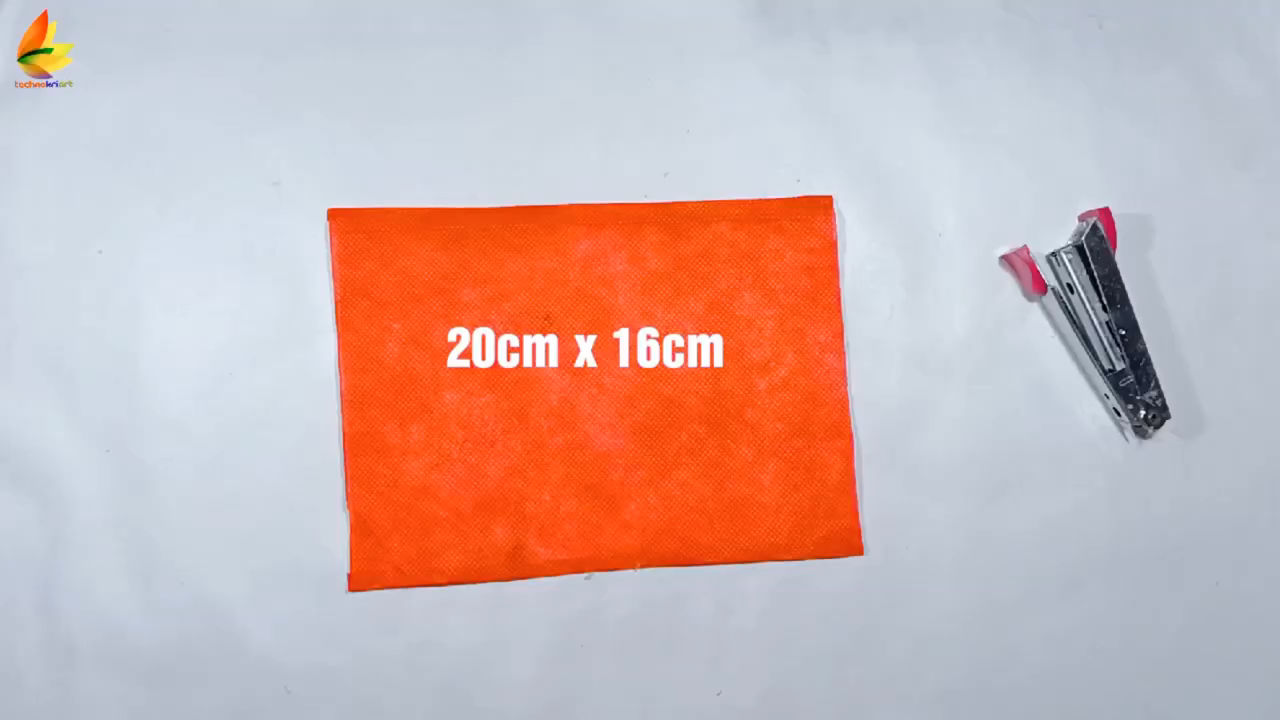
Here are the measurements for nitpicky DIYers.
Source
Instructions:
1) Make folds on the fabric like the ones seen on surgical masks and staple them into place.
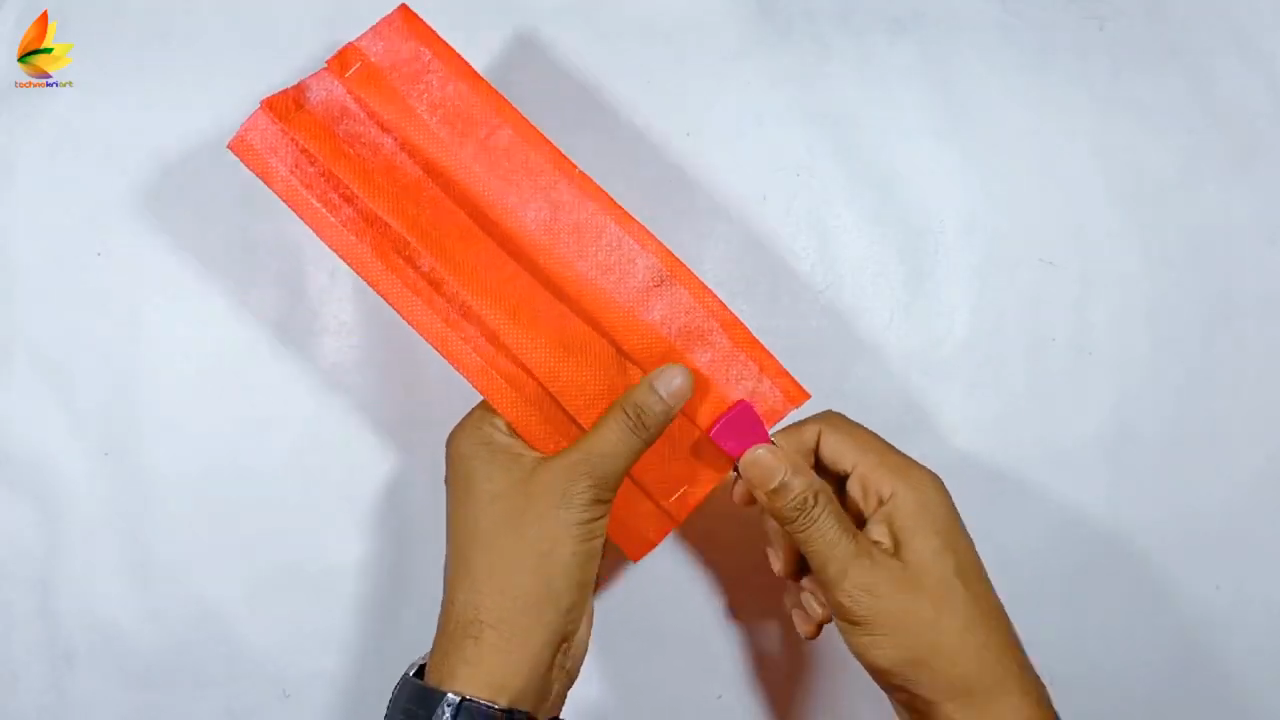
2) Place the strings on the sides of the mask, then fold and staple the fabric over the ropes.
3) Tie up the string and pull tightly to keep in place, and you’re all set!
Be stylish and use patterned cloth bags instead of plain-coloured ones. Make medical fashionable!
– INTERMEDIATE –
6. T-shirt
Everyone has at least one t-shirt for a lazy Friday night. The t-shirt’s stretchiness means easy adjustment like an apron for your head. Make the mask thicker with remaining shirt strips for small reassurance.
What you will need:
- T-shirt
- Scissors
- Paper clips
Optional:
- Tape measure
- Pliers
- Marker
- Paper towel
- Coffee filters
Instructions:
1) Trim the t-shirt from armpit to armpit and keep the torso.
2) The hem of the t-shirt should face towards you as you fold in it half and cut the sides to make looped strips.
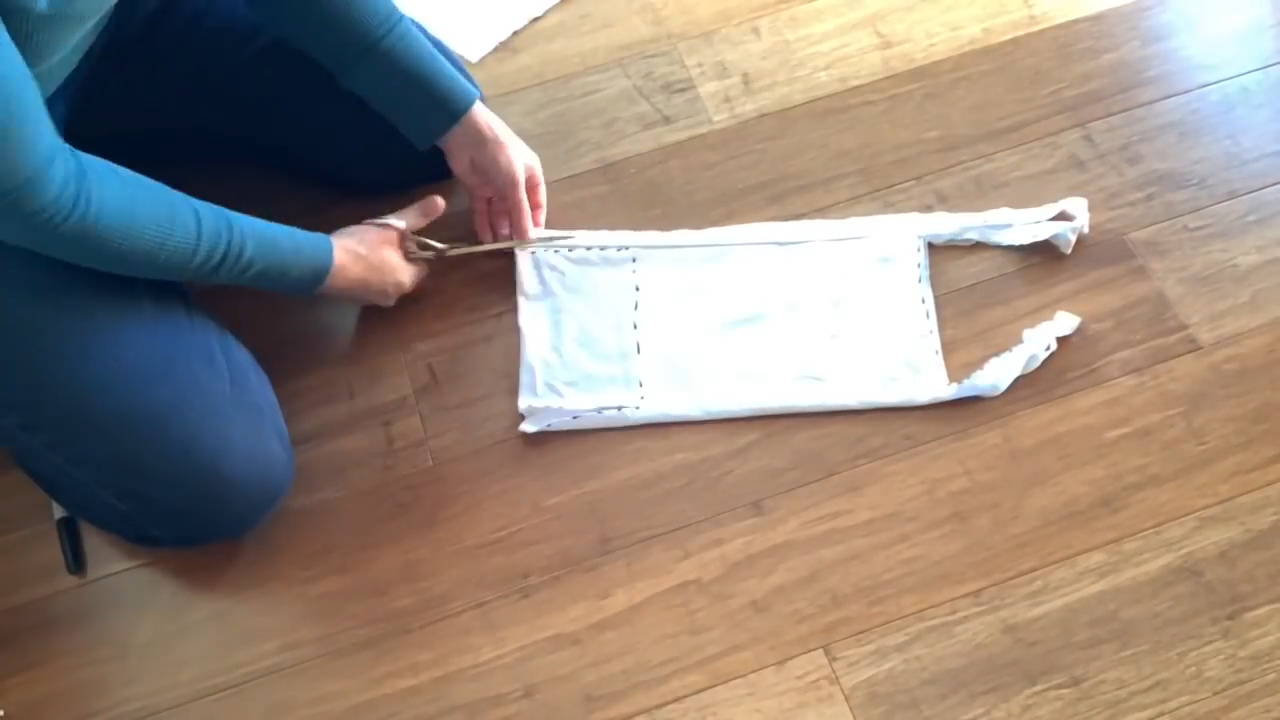
Make measurements or eyeball them as you cut.
Source
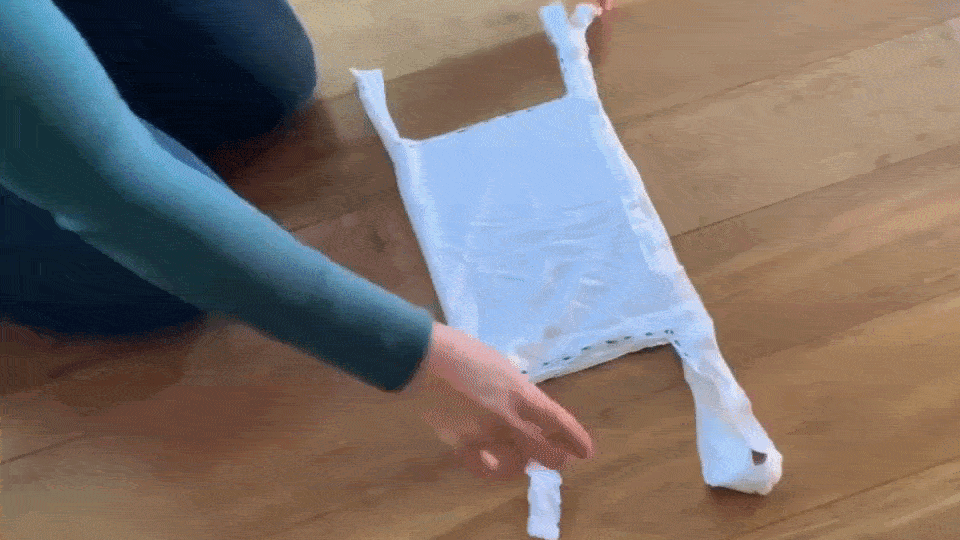
Your t-shirt should have six “legs” as you unfold if cut right.
Source
3) There are two layers of the t-shirt – cut the rectangles between the “legs for the top layer to make a sling for the bottom. Then cut the looped strings to make six legs.
4) For the bottom strips, pull and stretch to make ropes. As for the other two strips, split the middle piece and braid the middles and bottom together.
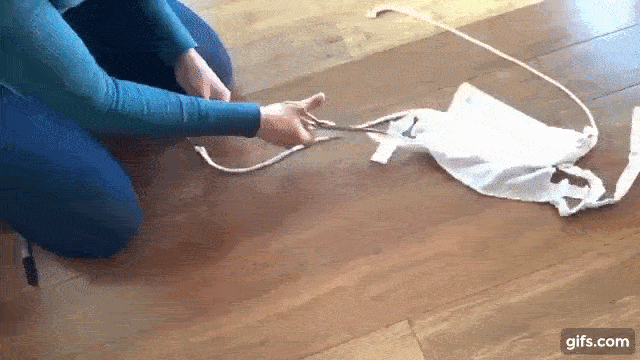
The bottom should be a simple string while the top is braided.
Source
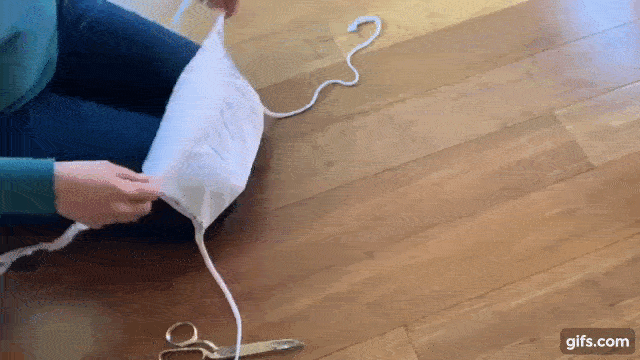
The mask has a pocket for putting in filters. You can use paper towels, coffee filters, or even the unused t-shirt layers.
Source
5) Make a small snip on the hem where the nose will be.
6) Straighten the paper clip from earlier but bend the ends with pliers or dull them with tape for safety.
7) Finally, insert the paper clip through the snipped hem and bend it to make your mask’s nose clip.
– ADVANCED –
7. Shoe covers
Keep your shoes and your face clean with shoe covers! This homemade N95-like mask is made from materials similar to the real thing but without respirators. While you can’t entirely filter the air, it works better than a surgical mask. Shoe that COVID-19 away!
You should only make this if you have limited masks and cannot get more. The provided template is in case you don’t have an N95 mask for tracing.
What you will need:
- MERV 13 air filter (available online via Alibaba and Amazon)
- An N95 mask (or a DIY template found here)
- Citric acid/lemon juice/vinegar
- Hot glue and a glue gun
- Pipe cleaners
- Scissors
- Shoe covers (made of polypropylene)
- Spunbond fabric (available online via Alibaba, Amazon, Lazada, Shopee)
- Staplers
Note: When buying materials online, read reviews and double-check seller identity before purchasing.
Instructions:
1) First, use an N95 mask or the template to trace the MERV 13 fabric, then do the same for the Spunbond. The Spunbond is a type of nonwoven fabric used in medical gowns and HEPA filters with waterproof qualities.
2) Spray the shoe covers with citric acid and let it sit for several minutes.
3) Once dried, cut off the covers’ ankles, but do not throw them out. We can use the elastic bands inside for mask straps later.
4) Now, sandwich the MERV 13 between two Spunbond layers. Don’t forget to hot-glue the layers together.
5) Take three strips of pipe cleaners and glue them to the nose area of the mask.
6) Paste another layer of Spunbond over the sticks and press firmly with the back of your scissors so you don’t burn your hands.
7) Next, staple the elastic to the front of the mask. Stapling at the front allows the band to sit against your face.
8) Place the mask over a glass cup and bend it downwards. The filter’s wire-framing helps keep the shape for your face.
The result should look like an N95 mask without an air filter.
8. HEPA filter
The fabric uses the same material as an N95 mask and therefore, can help with filtering air. Make sure the filter is made of polypropylene and not fiberglass because the latter is dangerous to breathe in.
What you will need:
- HEPA Air Filter (available online through Amazon, Lazada, or Shopee)
- Heavy-duty safety pins
- Marker
- Portable air-conditioner foam
- Reusable wipes (“Handi Wipes”)
- Ruler
- Staplers
- Scissors
Optional:
- Silicone sealant
Instructions:
1) Make measurements from your nose bridge to the bottom of your chin with your mouth open. The extra room is to make sure the mask is not too small since we can pad it with foam later.
2) Break open the filter casing as you only need the fabric part of the filter. Cut out a part of the filter sheet large enough to cover your face; you can shorten the length later.
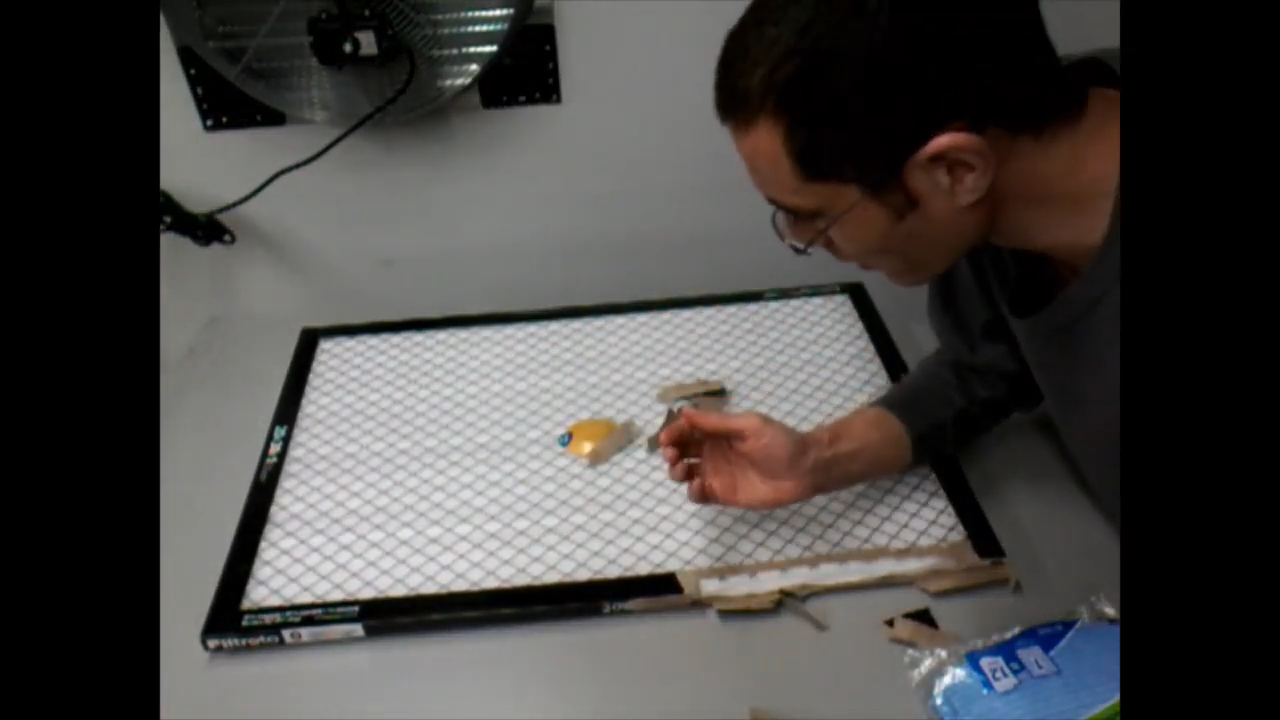 Be careful not to get cut by the metal wiring as you remove the fabric. It’s best to use scissors for the packaging.
Be careful not to get cut by the metal wiring as you remove the fabric. It’s best to use scissors for the packaging.
Source
3) Measure from cheekbone to cheekbone, going over the bridge of the nose.
4) Use your measurements from Step 1 and 3 to cut out pieces of foam for the mask.
5) For the cheekbone foam, using scissors, bevel the edges, and cut a notch in the middle of the strip to make a shape like an upper lip. Place the foam at the top of the filter sheet, stapling them at the bumps.
6) Hold the unfinished mask to your face (one hand holding the flaps together, the other on your face) and find the jaw area. Hold your fingers in that area and mark it with a marker.
7) While holding the mask to your face, fold the loose filter sheets under the chin so that it fits snugly onto your face. Staple the fold in place.
8) Only bevel the edges of the chin foam, placing them between the marked jaw areas from Step 6. The foam should look like a trapezoid if done correctly. Staple it thrice so that the middle area notches in.
9) Fold and place a reusable wipe between the foams and staple the ends in place. The wipe is for absorbing moisture and provides an extra layer for the mask.
10) To hold the mask on your face, use heavy-duty safety pins. If you feel your breathing leaking through other parts of the face mask, use a silicone sealant to fill up holes.
*Bonus* Antivirus Software CD
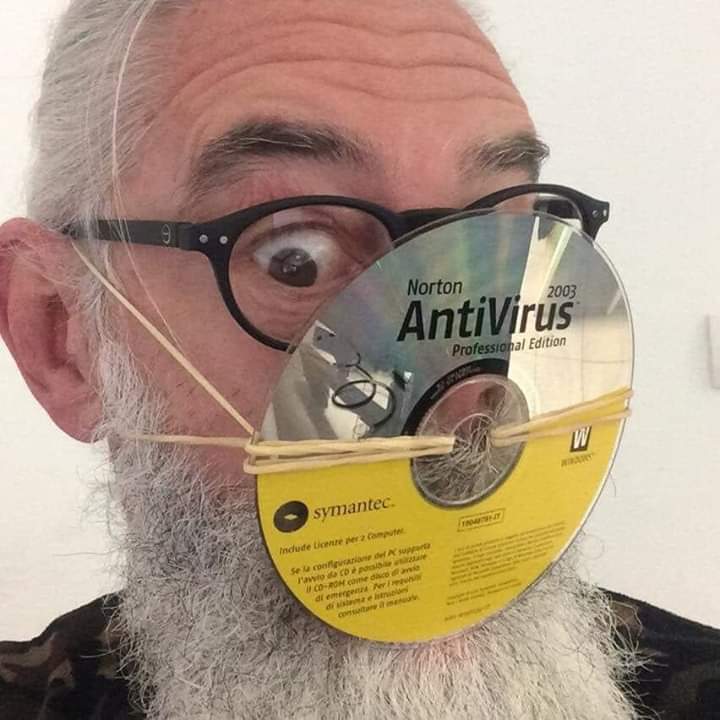
Image credit: @everette_gill
For the tech-savvy, this face mask won’t protect you from the germs, but you can sleep soundly at night, knowing your computer won’t be infected. 🤣
What you will need:
- Antivirus software on a CD
- Elastic bands
- A laugh
Stay safe and always wear your masks
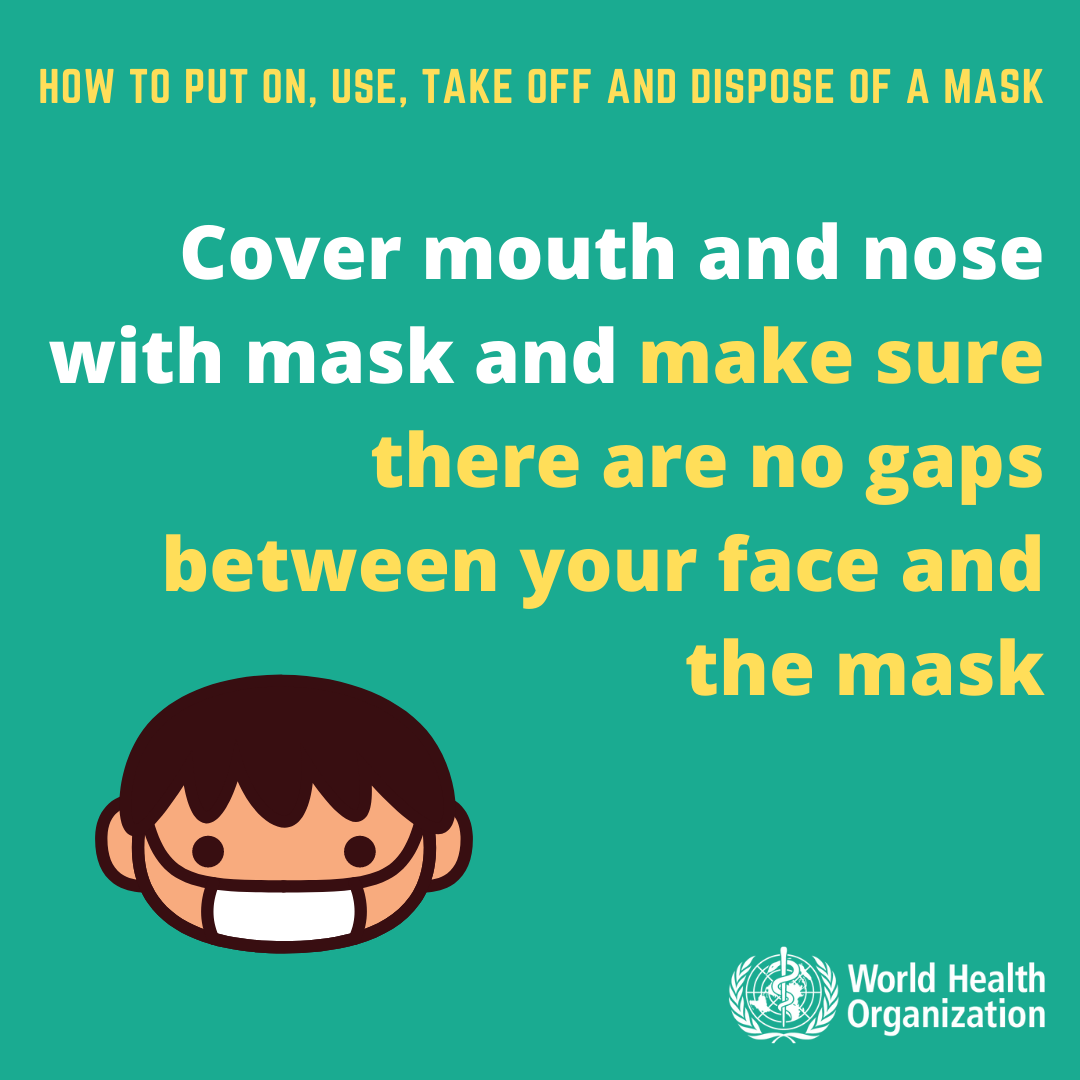
Image credit: World Health Organization (WHO)
It’s understandable to run out of masks because everyone wants and needs one daily. Making DIY masks such as these, while cost-efficient and not as good as real N95 masks, still gives small protection to your face.
Whether or not you are sick, it is still okay to wear a face mask in public but keep in mind that a mask does not make you entirely immune. It is most effective when combined with good hygienic habits, so wash hands with soap and use hand sanitisers often for best results.
Enjoying The Smart Local Thailand? Follow us on Facebook and Instagram for all things Thailand

